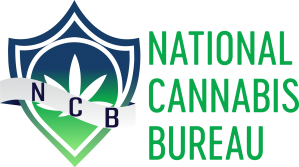A recent study published in the Journal of Cannabis Research found shocking evidence of the presence of pesticides in illegal versus legal cannabis from Canada.
In “High levels of pesticides found in illicit cannabis inflorescence compared to licensed samples in Canadian study using expanded 327 pesticides multiresidue method,” researchers compared 36 cannabis samples gathered from licensed dispensaries and 24 from illegal business (which was seized by law enforcement and submitted to Health Canada and lab tested in 2021).
Researchers tested the samples for traces of 327 different pesticides and found that many of the illegal cannabis samples contained harmful chemicals. “Pesticides were detected in 92% of Canadian illicit cannabis inflorescence samples with 23 unique pesticide active ingredients quantified,” research explained. “Four pesticides and synergists: myclobutanil, paclobutrazol, piperonyl butoxide, and pyrethrins, were detected at a high sample frequency rate, eight to 17 times in a total 24 illicit samples.”
They also noted that one illegal sample contained nine pesticide ingredients, but on average the illegal samples contained 3.7 different pesticides, with 87% containing more than one pesticide.
Researchers provided a table showing which pesticides were found between the licensed and illicit samples. Only 6% of the licensed samples tested positive for pesticides, which included just dichlobenil and myclobutanil.
The researchers discussed that the main objective of their study was to “streamline and expand our existing cannabis inflorescence method.” The process included the cannabis flower being homogenized in a laboratory blender, combined with a solvent called acetonitrile, and then is extracted with a device called a Geno-Grinder, centrifuged, and more, in order to obtain an inflorescence sample in a vial for testing. “This study demonstrates a new streamlined and expanded method for the detection of 327 pesticides in cannabis inflorescence via gas chromatography—triple quadruple mass spectroscopy and liquid chromatography—triple quadruple mass spectroscopy.”
Ultimately, they noted that studies of this nature are not yet common. “To the authors’ knowledge, this study is the only extensive pesticide multiresidue analysis that compares pesticides in the licensed and illicit cannabis markets in a nation-wide jurisdiction where cannabis has been legalized,” the study concluded. “Albeit being a small study, our results do support the Government of Canada messaging where ‘Consuming illegal products could lead to adverse effects and other serious harms. Testing of illegal cannabis has found contaminants like pesticides and unacceptable levels of bacteria, lead, and arsenic.’”
The stark differences between the safety of legal cannabis products and dangers of illicit cannabis in this study prove the efficacy of Canada’s cannabis industry.
Back in October 2019, a nonprofit organization called Beyond Pesticides sent a letter to congress calling representatives to protect the public from harmful pesticides in cannabis. “Pesticide use on marijuana is illegal. Because marijuana is not a legal agricultural crop under relevant federal law (Federal Insecticide, Fungicide, and Rodenticide Act) and hemp has only recently been legalized, EPA has not evaluated the safety of any pesticide on marijuana plants. EPA has established no allowances for pesticide use in cannabis production, and no tolerances, nor any exemptions from tolerances, for pesticide residues on cannabis,” Beyond Pesticides wrote. “In the absence of federal regulations governing pesticides in cannabis production, the use of pesticides not registered by EPA is illegal.”
Beyond Pesticides also published a more recent article about the past and modern pesticide issues with cannabis, recommending that a precautionary approach be adopted by states in order to protect consumers. “Given the absence of federal testing for pesticide effects on cannabis consumers, producers, and the environment, states should establish rules for sustainable production practices that safeguard public health and the environment,” the organization said. “Beyond Pesticides recommends a systems-level approach to cannabis production, mandating compliance with national organic standards.”
Back in September 2019, 1,000 people became sick and 18 people died of a then-mysterious vaping illness. Ultimately the Centers for Disease Control and Prevention (CDC) announced the culprit to be Vitamin E Acetate in e-cigarette and vaping products, which EVALI (e-cigarette or vaping product-use associated lung injury). Although Vitamin E Acetate is considered to be safe when taken orally or topically, inhaling it can coat the lungs and lead to issues with breathing among other concerns. The events of this crisis greatly increased awareness regarding ingredients for inhaled products (both cannabis and non-cannabis related).
Cannabis products have also previously been recalled due to unsafe levels of mold. In November 2022, Colorado regulators issued a safety advisory regarding tainted product batches. Earlier this year in January, the Nevada Cannabis Compliance Board issued a public safety announcement regarding the use of an unapproved pesticide called Ethephon on cannabis products. The affected products included an estimated 117 edibles, 41 pre-rolls, and more than 200 concentrates were sold at 104 dispensaries.
Earlier this year in February, Vermont legislators announced a recall for cannabis grown with Eagle 20, which was reportedly causing headaches and nausea in consumers.
As policy around pesticides continues to develop, these examples stress the importance of education about pesticides and other substances used in the growth or production of cannabis products. It’s always a safe bet to obtain a certification of analysis from a cannabis company or business to verify that your product has been properly tested.
The post Study Found That 92% of Illegal Cannabis Samples Contained Pesticides appeared first on High Times.

